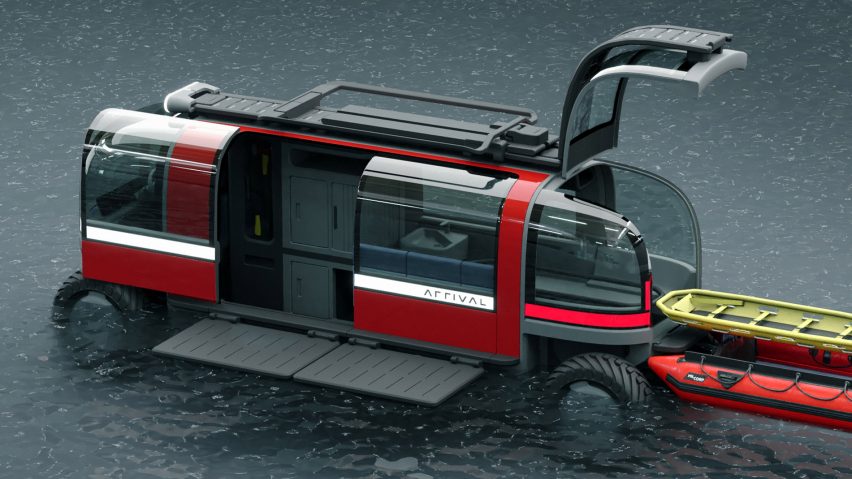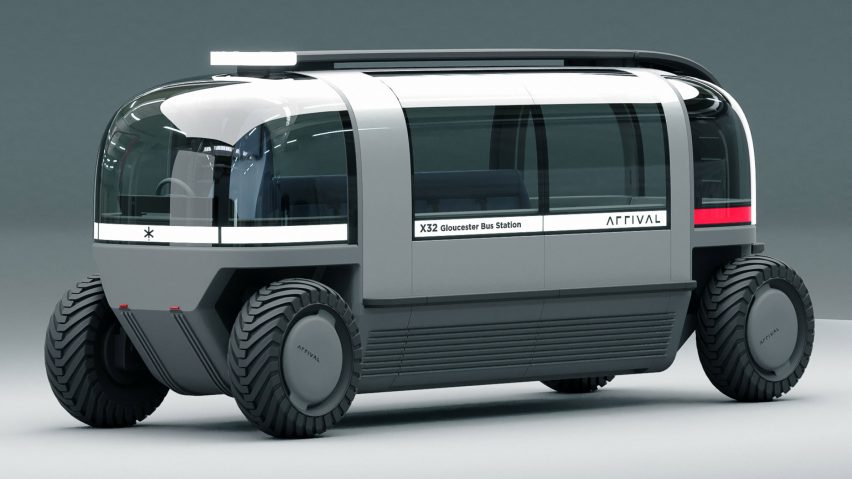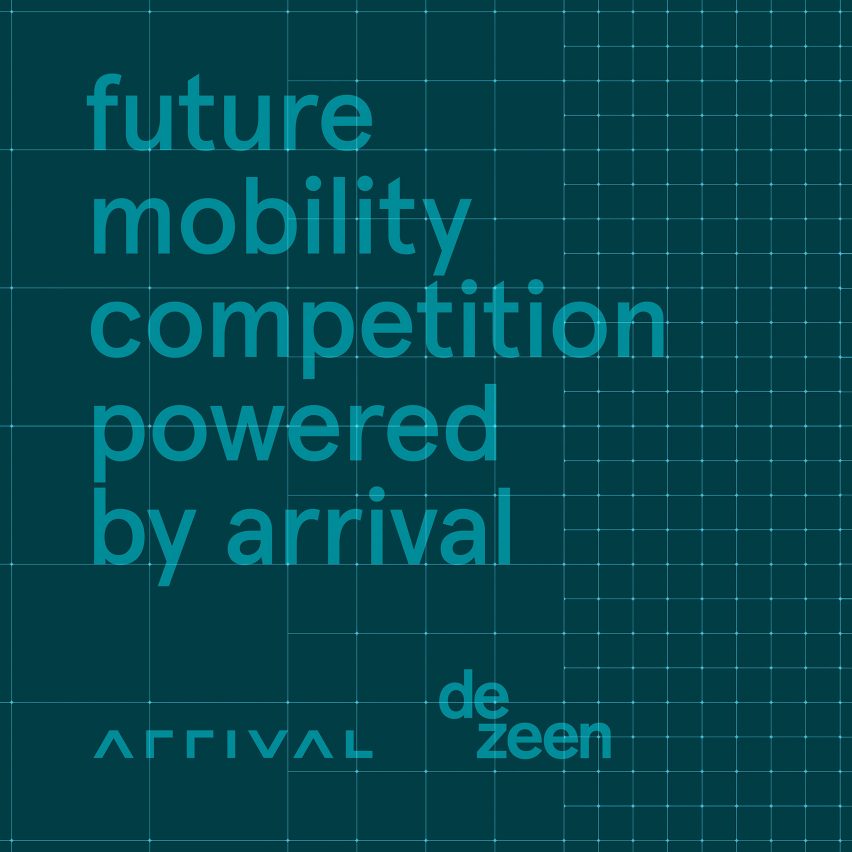
Jordan Barnes designs semi-amphibious bus that can double as emergency vehicle during floods
Jordan Barnes' proposal for a semi-amphibious bus that can quickly transform into an emergency response vehicle is the first of 10 visionary transportation projects to be selected as finalists in Dezeen's Future Mobility Competition powered by Arrival.
Named Estuary Hopper, Barnes' concept is a semi-amphibious vehicle with the primary function of providing public transport for the city of Gloucestershire, UK. The city is surrounded by rural farmland and the River Severn, which regularly overflows and creates flooding across the county.
When an emergency arises, the vehicle is designed to be quickly and easily converted to provide mobility across the Gloucestershire floodplain.
The vehicle features an amphibious chassis that responds to changing water levels and large rugged tyres to enable traction on waterlogged ground.
The interior of the vehicle is modular with elements that can be removed and replaced to make space for essential equipment and storage such as stretchers or wheelchairs.
The roof of Estuary Hopper is equipped with a rail with attachment mounts for a rescue boat to help access those stranded or in need of aid.
Exterior pontoons can be attached to the vehicle's sills to create space for loading equipment or personnel.
The project is one of 10 finalists in Dezeen's Future Mobility Competition powered by Arrival, which sought mobility solutions that reimagine the future of transportation.
Read more about the proposal below.

Estuary Hopper
Jordan Barnes
Birmingham, UK
Finalist
"Located on a vast flood plain in the southwest of England is the city of Gloucester. Estuary Hopper is a flexible system that can function as public transport at its core but can be adapted for different uses when a crisis hits.
"Our systems are unprepared for large natural forces and it is clear that our current range of vehicles and infrastructure are not suited to a rapidly changing environment.
"Estuary Hopper's architecture is built upon an amphibious chassis that is capable of adjusting to changing water levels and features high sills to form a watertight hull.
"A large central spine running along the length of the vehicle forms the backbone for the superstructure. This spine supports the vehicle's interior blocks and modular panels, allowing it to be configured in a number of different ways.
"The base configuration is a mid-sized bus that is large enough to transport people on their day to day commute, but narrow and compact to remain mobile through difficult ground.
"A row of folding seats along the side of the vehicle maximises interior volume and opens up space for different needs such as wheelchairs and luggage.
"When an emergency calls, the platform can be quickly and easily converted into a response vehicle to manage the coming crisis."

Future Mobility Competition
The Future Mobility Competition is a global design contest that seeks to support emerging talent, bringing radical solutions to solve mobility challenges in cities and, in turn, create true sustainability and empower local communities.
Launched in partnership with electric vehicle company Arrival, the contest asked entrants to identify problems with mobility in their city, or a city they are familiar with, and propose solutions that will improve how people move around their environment.
The contest received over 170 entries from more than 45 different countries around the world.
The entries were assessed by a judging panel comprising Kunlé Adeyemi of architecture, design and urbanism studio NLÉ, Elizabeth Diller of New York studio Diller Scofidio + Renfro, Yves Béhar of Fuseproject, Jeremy Offer and Martina Wierzbicki from Arrival, as well as Marcus Fairs and Cajsa Carlson from Dezeen.
The panel selected 10 proposals as finalists to be published on Dezeen. We are unveiling one finalist a day from 27 June, culminating in the winner being announced on 8 July.
The winner will win the top prize of $25,000, while the runner-up will receive $15,000 and the third-placed entrant will receive $10,000. Each of the seven remaining finalists will receive prize money of $5,000.
Find out more about the Future Mobility Competition ›
See all the finalists revealed so far ›
Partnership content
The Future Mobility Competition powered by Arrival is a partnership between Dezeen and Arrival. Find out more about Dezeen partnership content here.